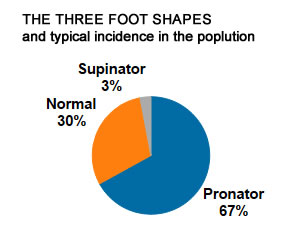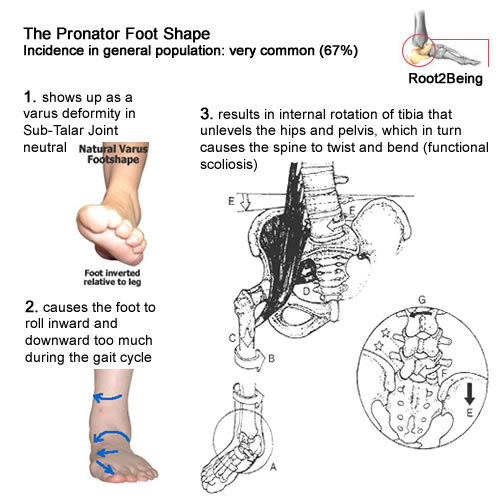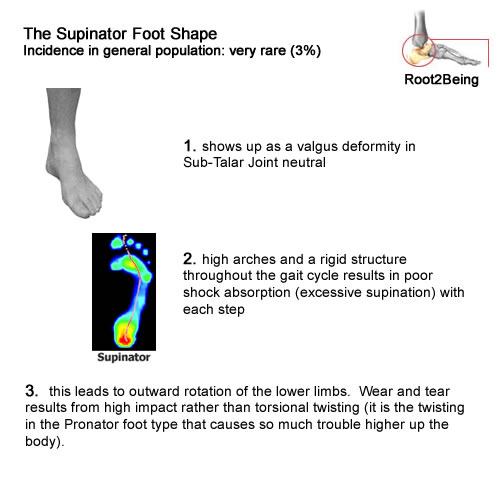The Three Foot Shapes: Normal, Pronator and Supinator. Which one are you?
All feet can be categorised into one of three foot shapes, based on appearance and function when weight-bearing: Normal, Pronator and Supinator
Normal foot shape (the lucky 30%)
The Normal foot shape (where there is neither excessive pronation or supination during gait) is present in approximately 30% of population. The calcaneus and talus are at or near ideal structural alignment, enabling the foot to function optimally (pronate and supinate effectively) throughout the gait cycle.
The majority of people (around 70%) have some degree of abnormal foot shape, the most common being the Pronator foot shape.
Pronator foot shape (most common, 67%)
- shows up as a varus deformity in Sub-Talar Joint neutral
- causes the foot to roll inward and downward too much during the gait cycle (hyperpronation)
- results in internal rotation of the lower leg (tibia) that twists and unlevels the hips which in turn can also cause the spine to twist and bend out of alignment (functional scoliosis).
Supinator foot shape (very rare, 3%)
- shows up as valgus deformity as in Sub-Talar Joint neutral
- high arches and a rigid structure throughout the gait cycle results in poor shock absorption (excessive supination)
- leads to outward rotation of the lower limbs. Wear and tear results from high impact rather than torsional twisting
Of the three foot shapes, it is the Pronator (the most common) that has the greatest potential for negatively impacting your health, not just in your feet but throughout your body. As the varus deformity that defines this Pronator foot shape causes the foot to roll inward and downward with every step, this sets up twisting and internal rotation of the lower leg, hips and back that cause:
- stresses and strains in soft tissue throughout the musculoskeletal structure
- imbalances muscle groups, putting you at increased risk for suffering chronic injury and pain
- is a constant source of physical stress that over time, just like any other source of stress can imbalance the endocrine (hormonal) system, and eventually lead to nutritional deficiencies a range of illnesses, allergies and intolerances.
Dr Sandhu at the Bedford Chiropractic Clinic in England has a great depth of understanding about the importance of foot shape and function in the health of the whole body, as he explains in this short video:


